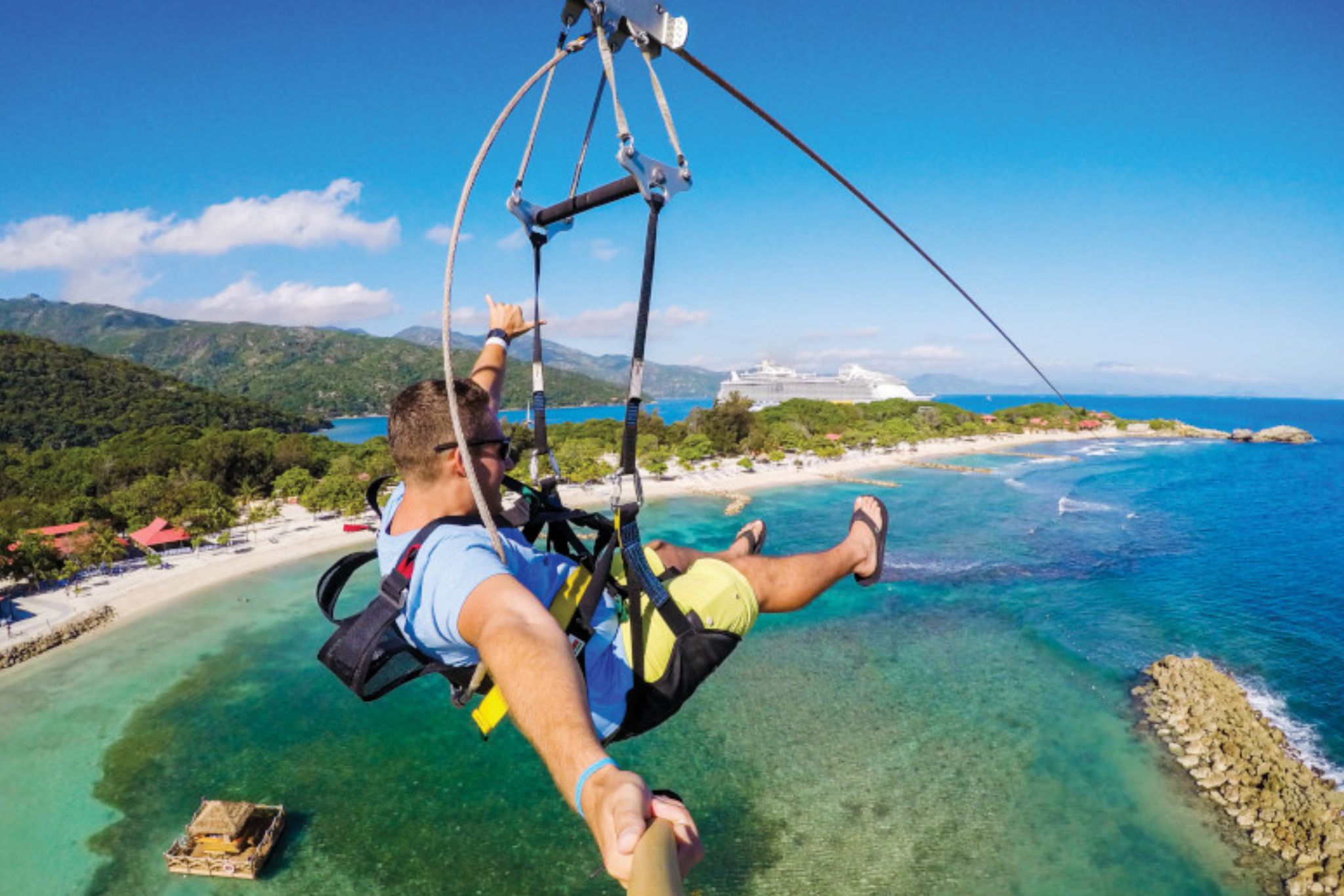
Honolulu is the vibrant heart of the Hawaiian Islands—where ancient Polynesian culture meets modern urban energy, world-famous beaches blend with historic landmarks, and the spirit of aloha welcomes visitors from around the globe.
As Hawaii's capital and largest city, Honolulu sits on O'ahu's stunning south shore, offering a rare combination of pristine Pacific beaches, volcanic crater hikes, and cosmopolitan city life all within minutes of each other. From the legendary surf breaks of Waikiki Beach to the solemn memorial at Pearl Harbor, from mist-shrouded hiking trails to James Beard Award-winning restaurants, Honolulu delivers experiences that capture everything that makes Hawaii magical.
Whether you're arriving before or after your Hawaii cruise from Honolulu Harbor, extending a Pacific crossing, or simply using the city as your island-hopping base, Honolulu offers enough attractions, natural beauty, and cultural richness to fill days of exploration. The city's perfect year-round weather—consistent 70-85°F temperatures and gentle trade winds—means every day is ideal for adventure.
So grab your sunscreen, embrace the island pace, and discover why Honolulu has been welcoming visitors with aloha for generations.
Best Outdoor Activities in Honolulu
Honolulu's outdoor scene is where the islands truly shine—volcanic landscapes, turquoise waters, and tropical trails create a natural playground unlike anywhere else on Earth.
1. Hike Diamond Head Crater
Diamond Head stands as Honolulu's most iconic natural landmark—a 760-foot volcanic tuff cone that's defined the Waikiki skyline for over 150,000 years. This dormant volcano crater offers one of O'ahu's most rewarding hikes, combining moderate challenge with absolutely spectacular payoff views.
The 1.6-mile round-trip trail, built by the U.S. Army Corps of Engineers in 1908, features historic military bunkers, steep staircases, dark tunnels, and dramatic switchbacks. The path climbs 560 feet through the crater's interior, with the final push involving 99 steps up through an old military bunker and a narrow spiral staircase to the Fire Control Station summit.
From the top, the 360-degree panorama is breathtaking—the entire Waikiki coastline stretches below, downtown Honolulu's skyscrapers glitter in the distance, and the infinite Pacific Ocean extends to the horizon. On clear mornings, neighboring islands emerge from the mist. It's the kind of view that makes you understand why ancient Hawaiians called this place Lē'ahi.
The trail opens at 6 a.m., and serious hikers arrive for sunrise to beat both crowds and heat. The early morning golden light painting Waikiki is absolutely magical. Reservations are now required and can be made online—parking passes cost $5 and walk-in entry is $1 per person.
Pro tips: Bring water, wear sturdy shoes, and start early. The crater has minimal shade and midday sun can be brutal. The hike takes 1.5-2 hours total at a moderate pace. Don't skip this—it's genuinely one of Hawaii's best experiences.
2. Snorkel at Hanauma Bay Nature Preserve

Hanauma Bay ranks among the world's best snorkeling sites—a pristine crescent-shaped bay formed when a volcanic cone collapsed and the ocean flooded in. The protected nature preserve shelters over 400 species of tropical fish in crystal-clear, calm waters perfect for snorkeling.
The bay's unique geology creates a natural aquarium effect. Parrotfish, triggerfish, tangs, and wrasses dart through coral formations just feet from shore. Green sea turtles (honu) glide gracefully through the shallows, and if you're lucky, you might spot an octopus camouflaged among the rocks.
The preserve takes conservation seriously—daily visitor caps prevent overcrowding, and a mandatory nine-minute educational video teaches proper reef etiquette before entry. It's worth the effort. The bay closes Mondays and Tuesdays to give the ecosystem rest days.
Entry costs $25 for non-Hawaii residents ($12 parking), and you must reserve tickets online in advance—they sell out weeks ahead during peak season. The tram to the beach costs $3 round-trip (recommended, as the walk back uphill is steep), or you can walk down for free.
Snorkel gear rentals are available on-site for $20, but bringing your own saves money. The left side of the bay (Witches Brew) offers more advanced snorkeling with deeper water and bigger fish, while the right side and center provide calmer conditions perfect for beginners and families.
Best time: Arrive at opening (6:45 a.m. summer, 7:15 a.m. winter) for the best visibility and smallest crowds. Mornings offer calmest waters before afternoon trade winds pick up.
3. Relax on Waikiki Beach
Waikiki Beach needs no introduction—it's one of the world's most famous stretches of sand and the birthplace of modern surfing. This crescent of golden beach backed by high-rise hotels has welcomed beach lovers for over a century, yet somehow still delivers that perfect Hawaii beach experience.
The two-mile beach actually consists of eight distinct sections, each with its own character. Kuhio Beach offers gentle waves perfect for beginner surfers and families. Queen's Beach attracts locals and long boarders. Fort DeRussy Beach provides more space and fewer crowds. Duke Kahanamoku Beach (named for Hawaii's legendary Olympic swimmer and surfer) is ideal for swimming with its calm lagoon protected by a seawall.
Surf lessons are everywhere—expect to pay $50-80 for a group lesson where instructors guarantee you'll stand up. Outrigger canoe rides launch regularly from the beach ($20-25 for 15 minutes), offering a thrilling ride through the surf that's been a Hawaiian tradition for centuries.
The beachfront promenade is perfect for sunset strolls, with street performers, local artists, and the famous bronze statue of Duke Kahanamoku watching over his beloved beach. On select evenings, free hula performances take place at Kūhiō Beach Hula Mound—traditional dance under the stars with Diamond Head as backdrop.
Waikiki can be crowded, especially midday. But there's something magical about this beach that transcends the tourist bustle—the warm water, perfect waves, swaying palms, and that distinctly Hawaiian vibe that's impossible to replicate anywhere else.
4. Explore Kailua and Lanikai Beaches

About 30 minutes northeast of Honolulu, the windward coast towns of Kailua and Lanikai offer a completely different beach experience—quieter, more local, and arguably even more beautiful than Waikiki.
Kailua Beach stretches over two miles of powdery white sand lapped by turquoise waters in endless shades of blue and green. The offshore trade winds make it popular with kiteboarders and windsurfers, while the gentle waves and gradual slope attract families. The beach has facilities, lifeguards, and plenty of space to spread out.
A short walk or drive away, Lanikai Beach takes it up another notch. Often ranked among America's best beaches, Lanikai ("heavenly sea" in Hawaiian) lives up to its name with impossibly soft sand, crystal-clear water, and the photogenic Mokulua Islands offshore—two small seabird sanctuaries that create perfect postcard views.
Lanikai is entirely residential with no facilities, parking is street-only and competitive, but the pristine beauty makes the effort worthwhile. Rent a kayak or stand-up paddleboard and paddle out to the Mokulua Islands (landing is prohibited, but you can circle them), or simply float in the bath-warm water and marvel at your surroundings.
Both beaches are accessed via public beach access paths between private homes. Take TheBus route 70 from Waikiki (transfers in Maunawili) or drive and deal with limited parking—arrive before 9 a.m. for the best spots.
5. Hike Makapu'u Point Lighthouse Trail
For a hike with minimal effort and maximum reward, the Makapu'u Point Lighthouse Trail delivers stunning coastal views accessible to almost everyone. This paved 2-mile round-trip path gains just 500 feet elevation while offering panoramic vistas of O'ahu's southeastern coast.
The trail follows an old service road to the historic 1909 lighthouse perched on rugged cliffs 400 feet above the crashing Pacific. From the viewpoint, you'll see the Koolau Mountains, Makapu'u Beach below, and Rabbit Island and Turtle Island offshore. During winter months (December-April), this is one of O'ahu's best spots for whale watching—humpbacks breach and play in the channel below.
The path is entirely paved and stroller/wheelchair accessible, though the steady uphill climb provides a workout. Bring water and sun protection—there's zero shade. The trail is most popular at sunrise and sunset when the light is magical and temperatures are cooler.
Outdoor activities recap:
- Diamond Head offers iconic summit views after a moderate volcanic crater hike
- Hanauma Bay provides world-class snorkeling in a protected marine preserve
- Waikiki Beach combines legendary surfing with quintessential Hawaiian beach vibes
- Kailua and Lanikai deliver pristine windward coast beauty away from crowds
- Makapu'u Point offers accessible coastal hiking with whale watching opportunities
Historical & Cultural Landmarks
Honolulu's rich history as a royal capital, military stronghold, and cultural crossroads creates layers of fascinating sites that tell the Hawaiian story.
1. Pearl Harbor National Memorial
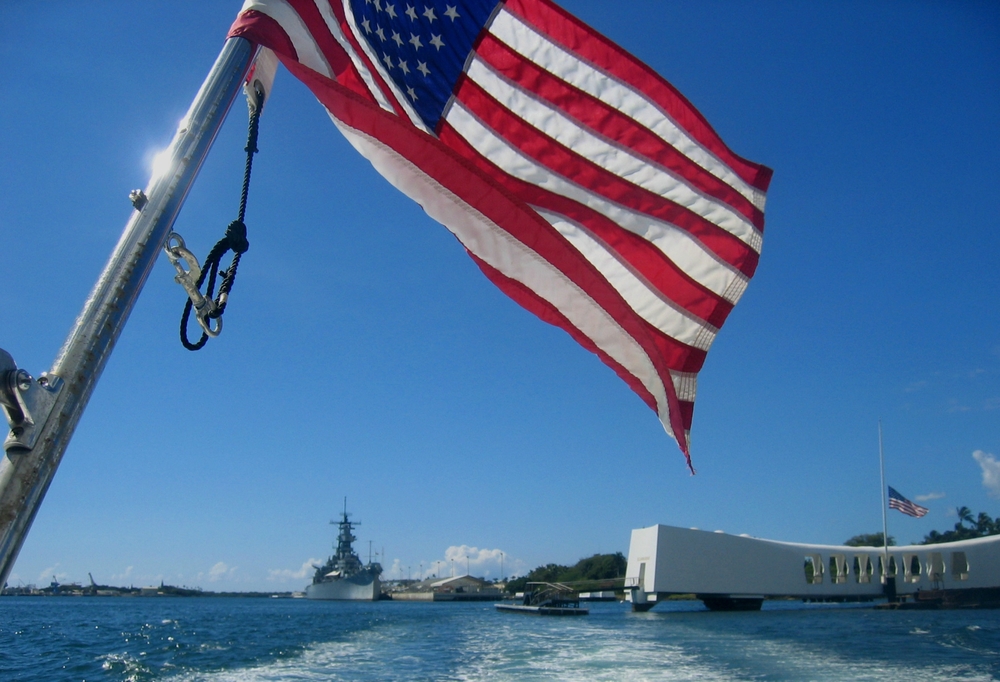
No visit to Honolulu is complete without experiencing Pearl Harbor, where December 7, 1941 changed the course of World War II and American history. The Pearl Harbor National Memorial encompasses five historic sites that honor the 2,403 Americans who died in the surprise Japanese attack.
The USS Arizona Memorial is the emotional centerpiece—a stark white structure spanning the sunken battleship where 1,177 sailors and Marines remain entombed. The memorial can only be accessed by U.S. Navy boat from the visitor center. You'll watch a 23-minute documentary film about the attack before boarding. Looking down through the memorial floor into the water below, you can see the ship's rusting hull and oil still slowly leaking to the surface—tears of the Arizona.
The Battleship Missouri Memorial sits in Pearl Harbor where Japan formally surrendered on September 2, 1945, ending WWII. Tour this massive Iowa-class battleship, see the exact spot where surrender documents were signed, and explore the decks where kamikaze strikes left their mark.
The USS Bowfin Submarine Museum offers a fascinating look inside a WWII submarine nicknamed the "Pearl Harbor Avenger." The Pacific Aviation Museum showcases aircraft in historic hangars that survived the attack, including a restored Japanese Zero fighter.
Visiting logistics: Reservations are mandatory and should be made 56 days in advance (the maximum allowed) at recreation.gov—Arizona Memorial tickets are free but highly coveted. The visitor center opens at 7 a.m., and you must present your reservation and government ID. No bags allowed (only small wallets/cameras). Bag storage costs $7. Plan at least 4-5 hours to fully experience all five sites.
Tours from Waikiki hotels (around $65-90) handle transportation and reservations, simplifying the experience. The visitor center is about 30 minutes from Waikiki.
2. Iolani Palace
Iolani Palace stands as the only royal palace on American soil—an opulent symbol of Hawaii's short-lived monarchy and a moving reminder of sovereignty lost. Built in 1882 by King Kalākaua, this magnificent building served as the official residence of Hawaiian monarchs until Queen Liliuokalani's overthrow in 1893.
The palace was remarkably progressive for its time—electric lights, flush toilets, and telephones were installed before the White House had them. Today, meticulously restored rooms showcase royal Hawaiian life: throne room, state dining room, the King's library, and Queen Liliuokalani's bedroom where she was imprisoned after the overthrow.
Guided tours ($27.95 adults) lead you through the palace with fascinating historical context. Audio self-guided tours ($20) are also available. The grounds feature beautiful royal Hawaiian plants and the Iolani Barracks housing royal guard exhibits.
Tours must be booked in advance online. The palace hosts special events including royal birthdays and Hawaiian culture celebrations—check the calendar for these unique experiences.
Cultural note: Remove shoes before entering the palace (booties are provided) to protect the historic floors. This also honors Hawaiian custom of removing shoes before entering homes.
3. Bishop Museum
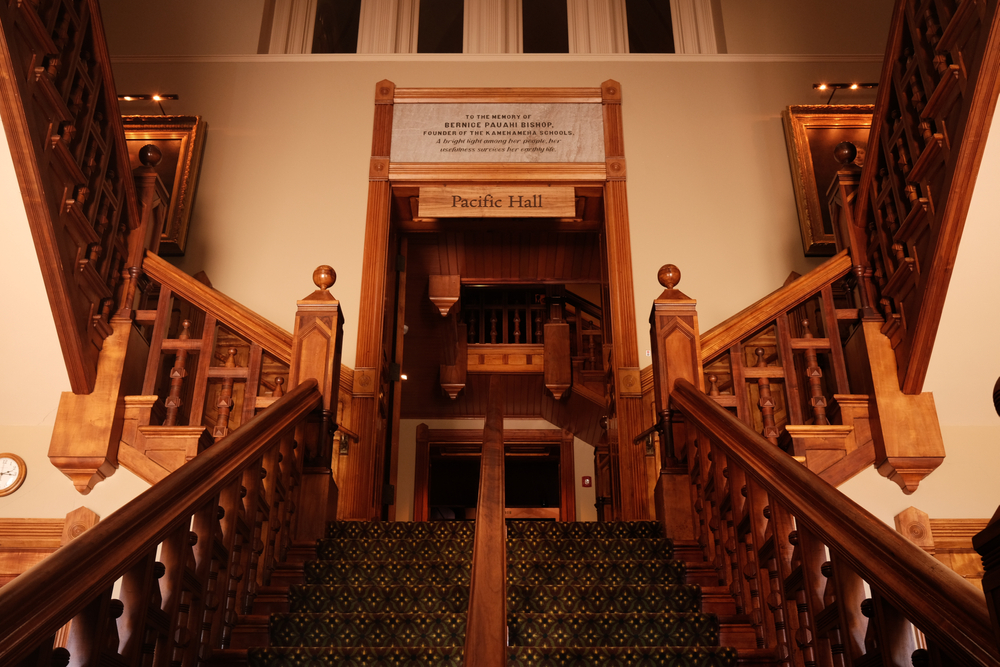
The Bishop Museum is Hawaii's premier natural and cultural history museum—the Smithsonian of the Pacific. Founded in 1889 to house Princess Bernice Pauahi Bishop's extensive collection of Hawaiian artifacts, the museum now holds over 25 million natural history specimens and cultural treasures.
The Hawaiian Hall showcases three floors of Hawaiian history, from ancient Polynesian navigation to monarchy period artifacts including royal feather capes (requiring thousands of tiny feathers), ancient weapons, and carved wooden ki'i (temple images). The planetarium offers shows about Polynesian navigation using stars.
Rotating exhibits explore Pacific Island cultures, volcanology, Hawaiian ecosystems, and contemporary Hawaiian art. Kids love the interactive Science Adventure Center with hands-on activities. The museum regularly hosts cultural demonstrations—hula, lei making, Hawaiian language lessons.
Adult admission is $29.95, children 4-17 $22.95. Plan at least 2-3 hours to explore thoroughly. The museum is located in Kalihi, about 15 minutes from Waikiki.
4. Chinatown
Honolulu's historic Chinatown—one of America's oldest—remains a vibrant, authentic neighborhood where Chinese, Vietnamese, Filipino, and other Asian cultures converge. Red lanterns hang above narrow streets lined with herb shops, noodle factories, Buddhist temples, art galleries, and some of O'ahu's best ethnic restaurants.
Wander through the colorful chaos of O'ahu Market and Kekaulike Market where vendors sell exotic fruits, whole fish on ice, live crabs, and vegetables you won't recognize. Duck into Wo Fat Building to admire the ornate Chinese architecture. Visit Kuan Yin Temple (free entry, donations welcome) with its massive golden Buddha and incense-filled prayer halls.
First Friday art walks (first Friday of each month, 6-9 p.m.) transform Chinatown into an open-air party with galleries, food trucks, live music, and street performers. The area comes alive with locals and visitors exploring the art scene. For food, Chinatown offers everything from $1.50 manapua (Chinese pork buns) to upscale Vietnamese fusion. The Pig and the Lady is one of Honolulu's most acclaimed restaurants. Pho shops and dim sum parlors line every street.
Chinatown is walkable from downtown Honolulu or a short ride from Waikiki. Daytime is vibrant and safe; evenings can be grittier in some areas. Stick to main streets at night.
Family-Friendly Attractions
Honolulu offers abundant activities that engage kids while keeping parents entertained—a perfect balance for family vacations.
1. Waikiki Aquarium
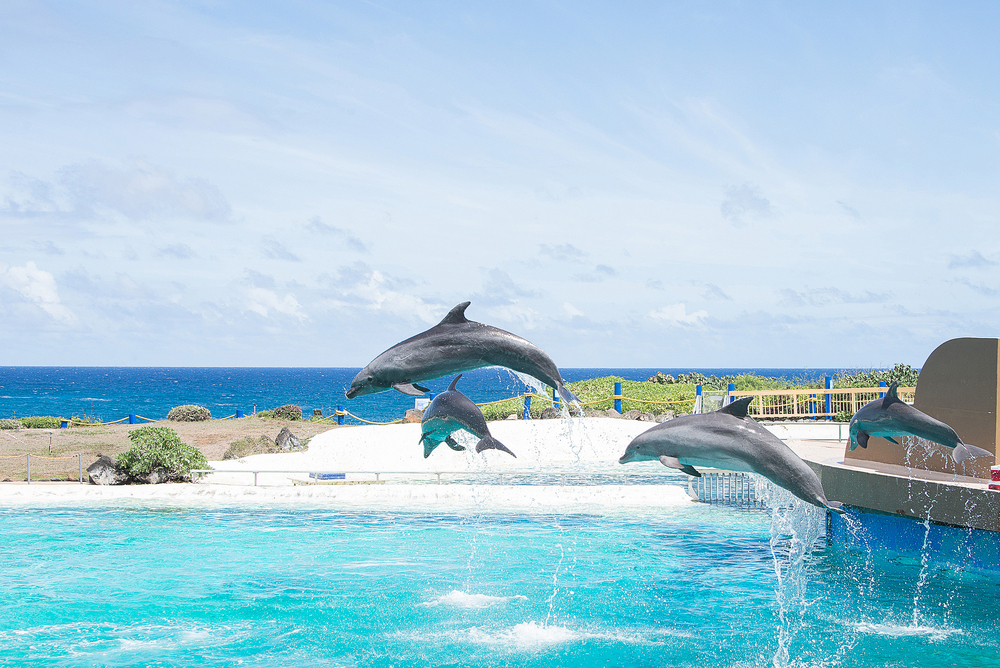
The Waikiki Aquarium, established in 1904, is America's third-oldest public aquarium and showcases Hawaiian and Pacific marine life. The small but impressive facility focuses on species found in Hawaiian waters—vibrant reef fish, jellyfish, Hawaiian monk seals, and the fascinating Giant Clam exhibit.
The Coral Farm demonstrates reef restoration efforts, while the Edge of the Reef exhibit lets kids safely touch sea cucumbers and hermit crabs in tide pools. The outdoor seal habitat often features juvenile Hawaiian monk seals being rehabilitated before ocean release.
Located right on Waikiki Beach near the base of Diamond Head, the aquarium makes an easy afternoon activity (especially hot days when you want air conditioning). Adult admission $12, children 4-12 $5. Plan 1-2 hours to see everything.
2. Honolulu Zoo
The 42-acre Honolulu Zoo sits in beautiful Kapiolani Park between Waikiki and Diamond Head. Home to over 900 animals, the zoo features African Savanna exhibits (giraffes, zebras, hippos), tropical forest species, and a dedicated "Keiki Zoo" (children's zoo) with farm animals kids can feed and pet.
The zoo's strength lies in its tropical setting—exhibits feel lush and naturalistic with Hawaiian plants creating an authentic island atmosphere. The reptile house showcases local species alongside exotics, and the primate exhibits feature endangered species from around the globe.
Evening "Twilight Tours" (seasonal) let families explore the zoo after hours when nocturnal animals are active. Weekend "Wildest Show in Town" concerts bring live music to the zoo grounds.
Adult admission $19, children 3-12 $11. Plan 2-3 hours to explore comfortably. The zoo is an easy walk from most Waikiki hotels.
3. Sea Life Park
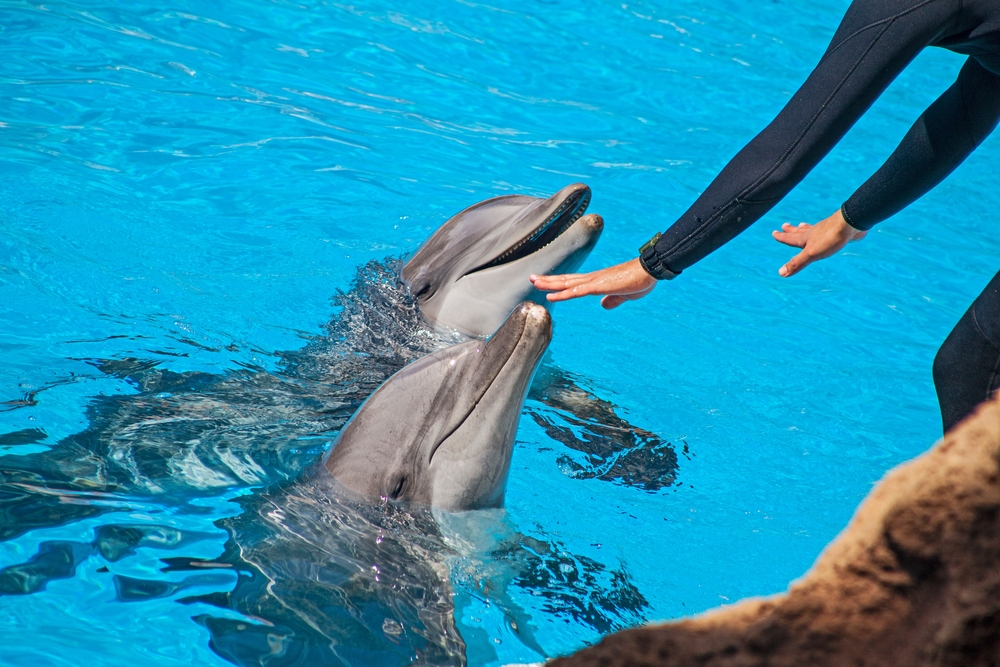
Located on O'ahu's southeastern coast about 30 minutes from Waikiki, Sea Life Park offers interactive marine experiences including dolphin encounters, sea lion feeding, and penguin meet-and-greets. The oceanarium features daily shows with dolphins and sea lions performing in a 300,000-gallon habitat.
Beyond shows, the park provides educational exhibits about Hawaiian marine ecosystems, sea turtle rehabilitation, and ocean conservation. The touch pools let kids interact with rays, starfish, and other sea creatures.
Admission packages range from basic entry ($51.99 adults, $38.99 children) to premium dolphin encounters ($249+). Book online for discounts. The park gets crowded—arrive at opening for the best experience.
Culinary Scene & Dining
Honolulu's food scene reflects its multicultural heritage—Hawaiian, Japanese, Chinese, Filipino, Korean, Vietnamese, and Portuguese influences create a unique fusion cuisine found nowhere else.
Must-Try Hawaiian Dishes
Hawaiian cuisine tells the story of the islands through food. Poke (pronounced POH-kay)—diced raw fish tossed with sea salt, limu (seaweed), soy sauce, and sesame oil—is Hawaii's most iconic dish. Maguro Brothers serves some of Honolulu's best, showcasing fresh fish with minimal seasoning.
- Loco moco—a hamburger patty over rice, topped with fried egg and brown gravy—epitomizes Hawaiian comfort food. Rainbow Drive-In has served legendary loco moco since 1961, and locals swear by it.
- Plate lunch—two scoops rice, one scoop macaroni salad, and a protein (teriyaki chicken, kalua pork, shoyu chicken)—represents Hawaii's plantation era when workers brought diverse cuisines to share. This $10 meal fills you completely.
Kalua pig, traditionally cooked in an underground imu oven, delivers smoky, tender pork that falls apart. Laulau wraps pork and fish in taro leaves, while poi (mashed taro root) provides the starchy foundation of traditional Hawaiian meals.
Local Favorite Restaurants
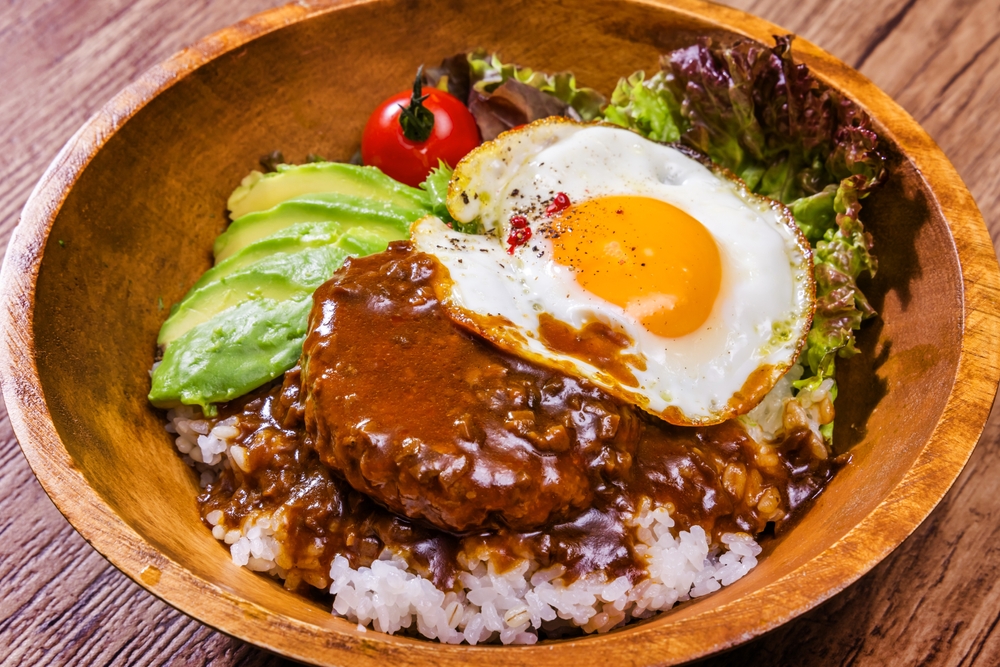
- Helena's Hawaiian Food (1946) is a James Beard Award-winning institution serving authentic Hawaiian dishes in a humble nine-table setting. Their pipikaula short ribs and kalua pig are legendary. Cash only, takeout available. Expect lines—it's worth the wait.
- The Pig and the Lady brings Vietnamese cuisine to Honolulu with creative fusion dishes earning national recognition (featured on Diners, Drive-Ins, and Dives). The Viet Frito Pie and Pho French Dip showcase Chef Andrew Le's inventive approach. Don't skip the Vietnamese Coffee Sundae.
- Senia offers fine dining without pretension, where Chefs Chris Kajioka and Anthony Rush create artful plates using Hawaiian ingredients. The Smoked Ahi Cigars are iconic, while seasonal tasting menus showcase local bounty with global technique.
- Yama's Fish Market provides plantation-era comfort food—Puerto Rican pasteles, Japanese mochiko chicken, Filipino adobo alongside Hawaiian classics like laulau and fresh poke. Takeout only; grab picnic tables at nearby Honolulu Stadium Park.
Fine Dining Experiences
- La Mer at the Halekulani Hotel ranks among America's finest restaurants—AAA Five Diamond and Forbes Five-Star awards recognize French haute cuisine enhanced with Hawaiian ingredients. The open-air oceanfront setting creates romance, while dishes like Lobster Consommé and torchon of foie gras exemplify culinary artistry. Formal dress code required. Reservations essential.
- Chef Mavro features Hawaii Regional Cuisine with seasonal tasting menus that change quarterly. Chef George Mavrothalassitis pairs each course with wines, creating a complete culinary journey through Hawaiian ingredients prepared with French technique.
Casual Dining & Local Spots
- Duke's Waikiki offers beachfront dining with reliably good seafood, famous Hula Pie, and nightly live Hawaiian music. The upstairs Barefoot Bar provides perfect sunset views with casual pupus (appetizers) and tropical drinks.
- Marukame Udon serves incredibly fresh sanuki udon noodles made in-house, visible through windows where you watch the entire process. The line wraps around the block at lunch, but moves quickly. Under $10 for steaming bowls of chewy noodles in rich broth.
- Leonard's Bakery has been making malasadas (Portuguese fried doughnuts) since 1952. These warm, sugar-dusted pillows of fried dough come plain or filled with custard, chocolate, or haupia (coconut). One is never enough.
Shopping & Local Markets
Honolulu blends high-end shopping, local crafts, and authentic markets where you'll find treasures reflecting island life.
1. Ala Moana Center

Ala Moana Center is the world's largest open-air shopping mall—350 stores and restaurants spread across four levels. Luxury brands (Gucci, Chanel, Louis Vuitton, Hermès) anchor one end, while mid-range retailers fill the rest. The diverse food court offers everything from plate lunch to sushi.
The mall's open-air design with tropical landscaping makes shopping pleasant even on hot days. Ala Moana Beach Park sits directly across Ala Moana Boulevard—popular with locals, less crowded than Waikiki, and perfect for post-shopping sunset.
2. International Market Place
Completely rebuilt in 2016, International Market Place in central Waikiki features upscale shopping (Saks Fifth Avenue, Michael Kors, Oliver Peoples) around a magnificent 100-year-old banyan tree. The property blends retail with restaurants and the Grand Lanai event space.
The marketplace's location makes it convenient for Waikiki visitors—walk here between beach sessions. Shops lean toward resort wear and jewelry, perfect for vacation purchases.
3. KCC Farmers Market
The Saturday morning Kapiolani Community College Farmers Market is where locals shop for fresh produce, prepared foods, and island-made products. Vendors sell tropical fruits (rambutan, dragon fruit, apple bananas), local honey, macadamia nuts, Hawaiian coffee, and ready-to-eat treats.
The market's location near Diamond Head makes it perfect to combine with a morning crater hike. Try the melt-in-your-mouth chocolate-haupia pie or fresh malasadas. Cash recommended, though some vendors accept cards.
The market runs 7:30-11 a.m. Saturdays at 4303 Diamond Head Road. Arrive early for best selection—serious shoppers come right at opening.
Cruise-Ready Tips for Travelers
Honolulu Harbor serves as both a turnaround port and port of call for Hawaiian cruises and transpacific voyages.
1. Getting to/from Honolulu Harbor

The cruise terminal sits about 2 miles from downtown Honolulu and 7 miles from Waikiki. Two piers handle cruise ships: Pier 2 (primary terminal at 521 Ala Moana Blvd.) and Pier 11 (near Aloha Tower, occasionally used for smaller ships).
From Daniel K. Inouye International Airport (HNL):
- Taxi: Flat rate around $40, 15-20 minute drive. Taxis queue at designated airport pickup areas on Level 1 at baggage claim.
- Rideshare (Uber/Lyft): $20-35 depending on demand, pickup from Level 2 center medians. The locally-owned Holoholo app offers similar service around $25.
- Shuttle services: SpeediShuttle and Roberts Hawaii offer pre-booked shared shuttles ($15-25 per person) or private transfers. Book online in advance.
- Public transit (TheBus): $3 per ride, but involves walking distance from stops to terminals with luggage—not recommended with heavy bags.
Norwegian Cruise Line's Pride of America offers the only year-round weekly Hawaii cruises from Honolulu. Other lines embark/disembark guests on transpacific repositioning cruises.
2. Hotels Near the Port
No hotels sit within walking distance of the cruise terminal, but Waikiki offers hundreds of accommodations 10-15 minutes away by car. Major hotel brands include Hilton Hawaiian Village, Sheraton Waikiki, Outrigger Resorts, and Hyatt Regency.
Most Waikiki hotels charge $40-65 daily parking, so factor this into costs if renting a car. Some hotels offer port transfer services for guests—inquire when booking.
Budget option: Hostels and vacation rentals in Waikiki start around $100/night, while luxury resorts can exceed $500/night.
3. What to Do Before Boarding
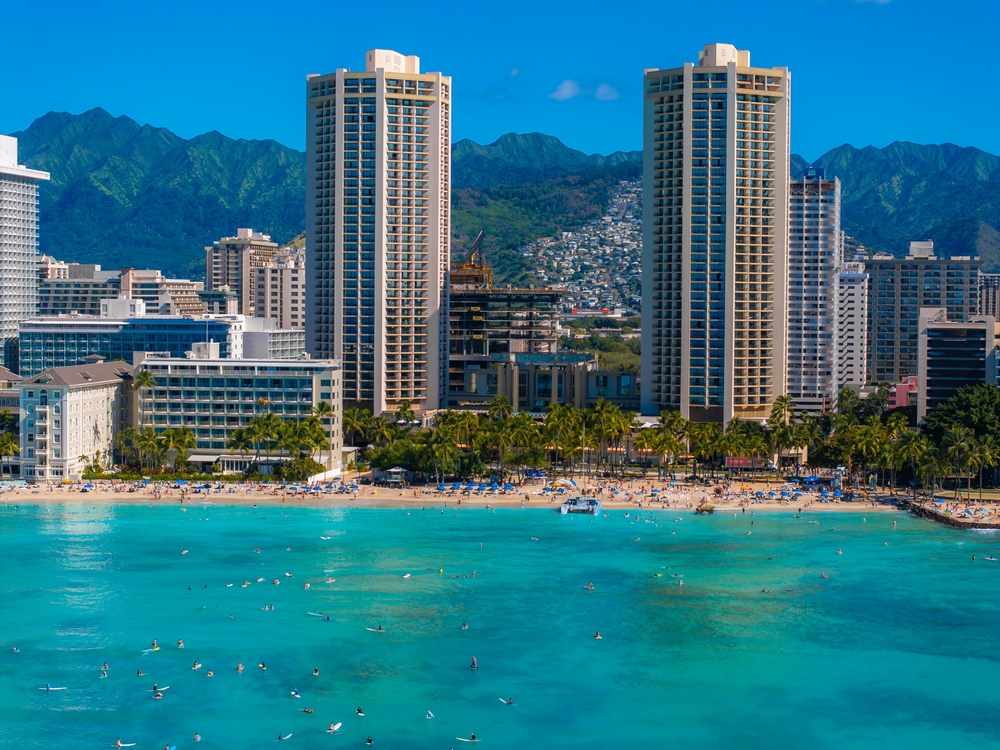
Cruise boarding typically begins 11 a.m.-1 p.m. with sailaway around 5-7 p.m. If you have morning hours before check-in:
- Early Diamond Head hike: Summit for sunrise (opens 6 a.m.), return to hotel by 8:30 a.m., and head to port refreshed.
- Breakfast in Waikiki: Grab açai bowls, malasadas, or plate lunch to go.
- Aloha Tower Marketplace: Located at Pier 11, this waterfront complex offers shops, restaurants, and free Wi-Fi while you wait.
- Quick beach walk: Ala Moana Beach Park (near the port) is calmer than Waikiki and popular with locals.
Always allow 60-90 minutes from Waikiki to terminal including check-in time. Traffic can be unpredictable, especially during morning and afternoon rush hours (7-9 a.m., 3-6 p.m.).
4. Luggage Storage
If you have time between hotel checkout and cruise boarding, or after disembarkation before flights:
- Airport: Left luggage services available at HNL for $15-20 per bag per day
- Hotels: Many offer luggage storage for guests even after checkout (confirm in advance)
- Pier 2 terminal: Limited luggage storage available for cruisers exploring the area
Day Trips from Honolulu
O'ahu's compact size makes the entire island accessible for day trips from Honolulu.
1. North Shore
The legendary North Shore, about 45 minutes north, offers a completely different Hawaii experience. Winter months (November-February) bring massive surf—professional surfers challenge 30-foot waves at Banzai Pipeline, Waimea Bay, and Sunset Beach. Summer transforms the North Shore into calm swimming beaches perfect for families.
Stop at Giovanni's Shrimp Truck in Kahuku for famous garlic shrimp plates. Visit Haleiwa town for surf shops, art galleries, and Matsumoto Shave Ice—a Hawaiian institution since 1951. The drive along Kamehameha Highway showcases stunning coastal scenery.
2. Polynesian Cultural Center

This 42-acre living museum in La'ie (about an hour from Honolulu) showcases Pacific Island cultures through interactive villages representing Hawaii, Samoa, Tahiti, Fiji, Tonga, and Aotearoa (New Zealand). Watch traditional canoe pageants, learn crafts, taste island foods, and experience authentic hula and fire knife dancing.
The evening Ali'i Lu'au and "Ha: Breath of Life" show combine feast with spectacular Polynesian performance. All-day packages start around $124.95 adults, $62.48 children ages 4-11. Book online for discounts and guarantee entry.
3. Windward Coast Scenic Drive
The windward coast from Kailua to the North Shore offers O'ahu's most photogenic scenery. Stop at Makapu'u Lookout for stunning views, Nu'uanu Pali Lookout where trade winds create hurricane-force gusts, and the adorable town of Kailua for beach time and lunch.
The drive takes you past verdant cliffs, secluded beaches, and roadside fruit stands selling apple bananas and coconuts. It's quintessential Hawaii—lush, dramatic, and impossibly beautiful.
Why Honolulu Belongs on Your Hawaii Itinerary

Honolulu is where Hawaii's heart beats strongest—an island capital that honors its royal past while embracing a multicultural present, where ancient hula dances under Diamond Head's shadow and world-class chefs reimagine poi in Michelin-star kitchens.
This city delivers the complete Hawaiian experience: world-famous beaches where you'll actually want to spend the day, hiking that rewards effort with views you'll remember forever, history that moves you to tears at Pearl Harbor, and food that makes you understand why Hawaii's culinary scene has gone global.
So before or after your cruise through the Hawaiian Islands, give Honolulu the time it deserves. Ready to experience paradise? Browse cruises departing from Honolulu and let your Hawaiian adventure begin with CruiseDirect.


